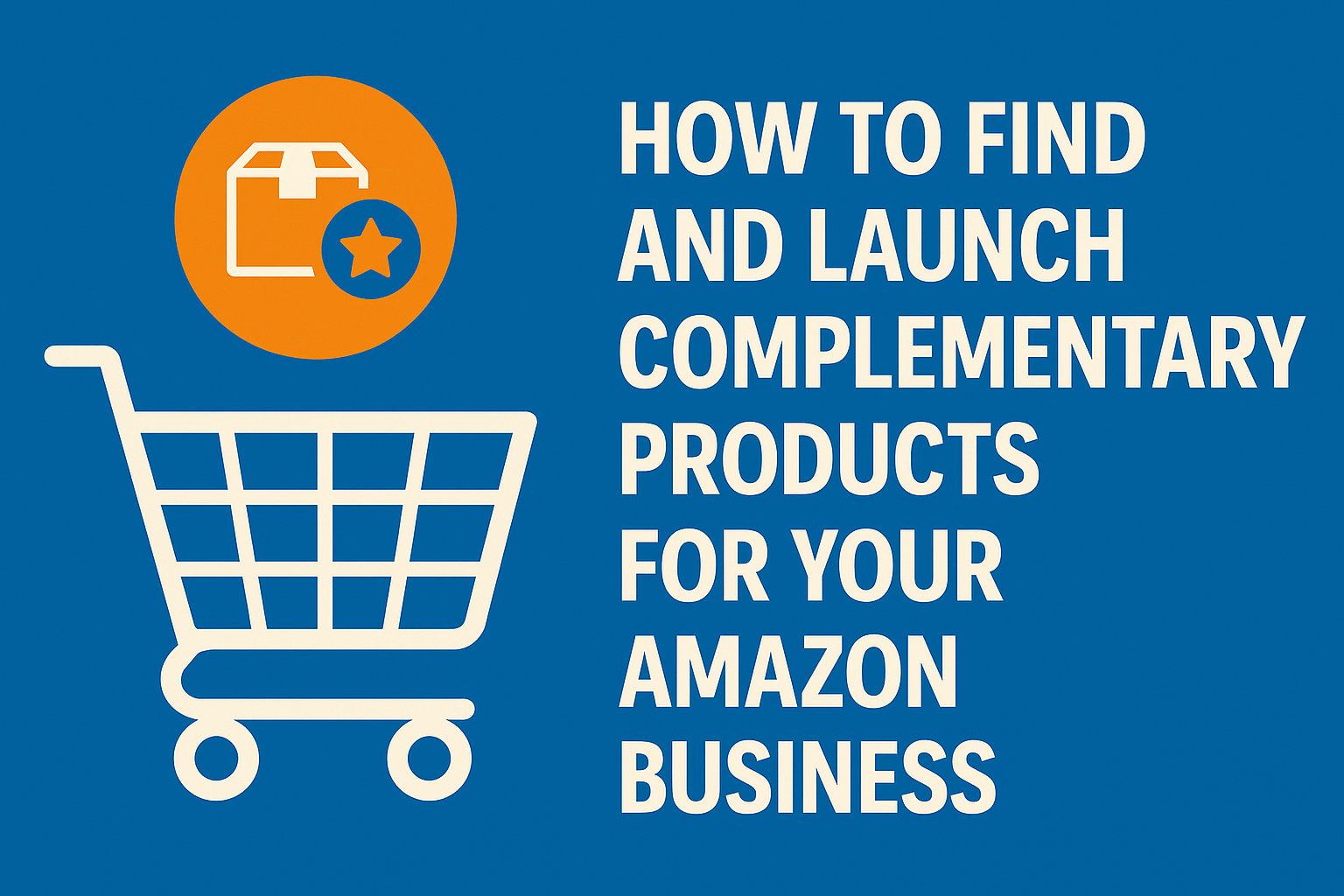How to Find and Launch Complementary Products That Boost Amazon Sales:
Expanding your Amazon catalog with complementary products is one of the most strategic ways to increase revenue and build brand loyalty. This guide walks you step-by-step through identifying, validating, and launching complementary products using data-driven tools like Helium 10 and Jungle Scout.
What Are Complementary Products and Why Do They Matter?
Complementary products are items that naturally pair with products you already sell. For example, if your main product is a French press coffee maker, a complementary product might be a reusable stainless steel coffee filter. These products help complete the customer experience, increase average order value, and boost brand loyalty.
Step 1: Review Your Best Sellers to Brainstorm Ideas
Start by analyzing your existing product catalog. Ask yourself:
- Which of my current products are top sellers?
- What additional products would my current buyers logically purchase?
- Are there accessories, bundles, or follow-up purchases that make sense?
Example:
- Let’s say you sell a French press coffee maker and want to identify a product that complements it.
- Start by reviewing the customer reviews and Q&A sections on both your listing and your competitors’ listings.
- Look for common customer frustrations or suggestions like:
- “I wish this came with a reusable filter.”
- “The filter wears out too quickly.”
- “Is this compatible with a metal filter?”
- “I hate using disposable filters.”
- These types of comments point to a missing but desired feature.
- In this case, a reusable stainless steel filter clearly addresses those needs and becomes a natural complementary product to consider.
Step 2: Use Amazon’s “Frequently Bought Together” to Spark Ideas
One of the easiest ways to discover complementary product opportunities is by using Amazon’s own “Frequently Bought Together” feature.
- Go to one of your product detail pages—or a competitor’s—and scroll down to the “Frequently Bought Together” section.
- Look at which items are consistently shown alongside your core product. These are products Amazon’s algorithm knows buyers often purchase together.
- Click into each suggested complementary product to explore its reviews, pricing, and potential bundling options.
- Using our example: If you’re selling a French press, you might see a stainless steel filter, coffee scoop, or cleaning brush appear consistently. Each of these could be worth exploring as a potential next product.
Step 3: Evaluate Customer Demand for Your New Product
Use Helium10 to See What Customers Are Searching For
Helium 10’s Magnet Tool helps you understand exactly what customers are searching for on Amazon and how often.
- Take our reusable filter example. You could use Magnet to check customer demand by entering keywords like “reusable coffee filter” or “French press accessories.” The Magnet tool will provide the monthly search volume for your search term and it will also provide related terms that could lead to additional ideas for complementary products that are being searched for on Amazon
Use Jungle Scout’s Estimated Sales to Determine the Size of the Market
Continuing with our reusable filter example:
- Search for “reusable coffee filter” on Amazon and run Jungle Scout’s Chrome Extension.
- Look at estimated monthly sales for the top listings. This gives you a real-world sense of demand for the filter before you commit to sourcing it.
- Now repeat this with other ideas you found like “coffee scoop” or “French press cleaning brush.” Compare sales volume and revenue to help prioritize which products to launch first.
In Conclusion: Let Customer Feedback and Data Guide Your Product Strategy
By analyzing your existing catalog, reviewing what customers are asking for, validating demand with data, and strategically launching high-value accessories, you create a stronger ecosystem for your brand.
Here’s your action checklist:
- Start with your best sellers and read your reviews carefully.
- Use Amazon’s “Frequently Bought Together” feature for inspiration.
- Validate demand with Helium10’s Magnet tool and estimate sales with Jungle Scout.
- Prioritize complementary products that solve problems or enhance your main item.
These simple, repeatable steps can help you scale faster, serve customers better, and strengthen your brand across your entire Amazon catalog.

Kaleb started his Amazon journey as a data analyst for a wholesale beauty brand, where he helped grow their Amazon sales from zero to over $1 million per month. Since then, he’s worked directly with more than 100 sellers across a wide range of categories, focusing on growing their sales through expert account and inventory management, ad strategy, and catalog optimization. When he’s not working with sellers, you’ll find Kaleb enjoying life with his fiancée Jerah and their dog Clifford, his favorite team outside of Amazon.

